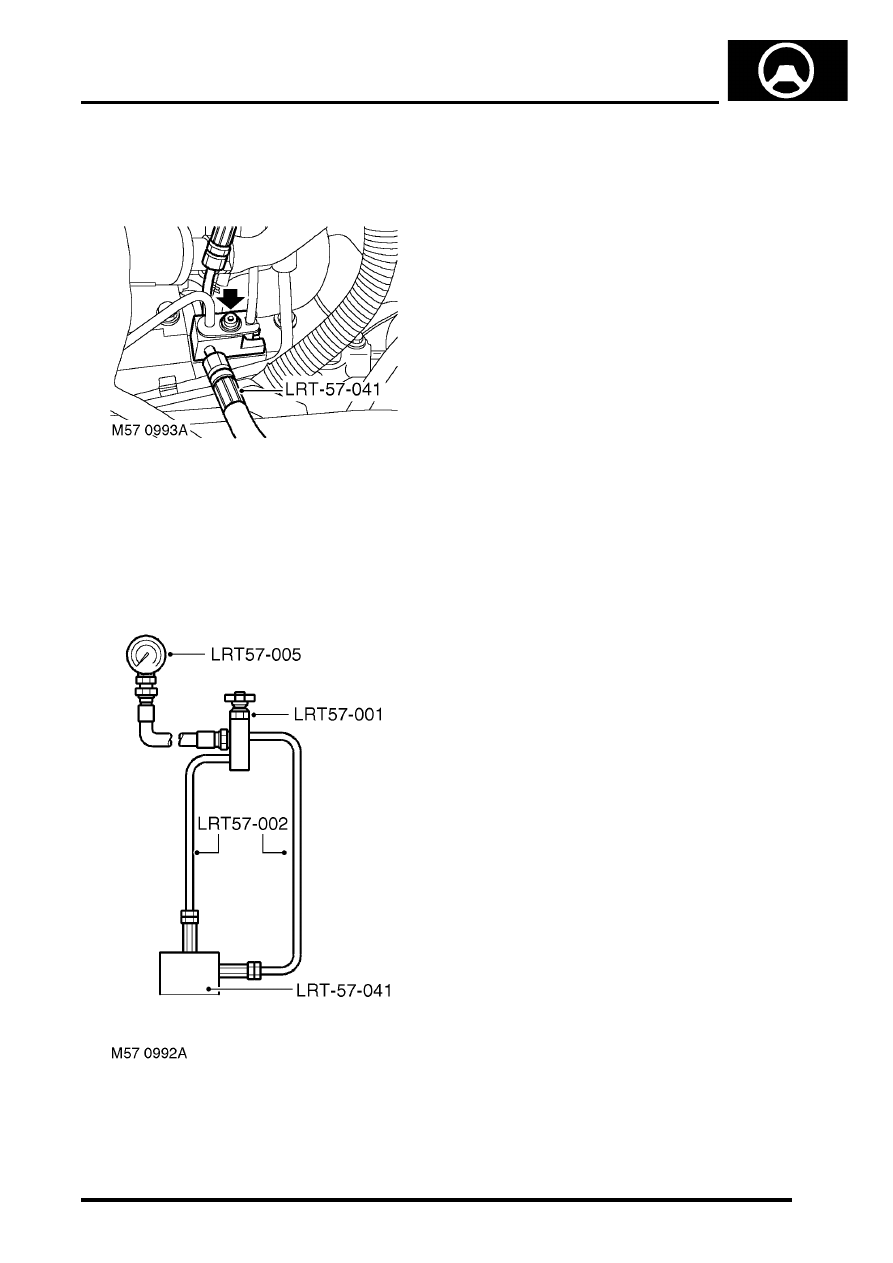Discovery 2. Manual - part 593

STEERING
ADJUSTMENTS
57-21
13. Remove bolt from steering box pipe retaining
clip. Leaving the PAS reservoir oil pipe in place,
release pipe retaining clip and PAS cooler pipe
from steering box, discard the seal.
14. Fit tool LRT-57-041 to steering box housing.
15. Fit seal to PAS oil cooler pipe.
16. Fit PAS cooler pipe to LRT-57-041 align the
retaining clip to pipes and tighten bolt to 24 Nm
(18 lbf.ft).
17. Connect test hoses LRT-57-002 to LRT-57-
041 and tighten unions. Ensure all pipes and
fittings are clear of engine rotating parts.
18. Hang pressure gauge in a safe position under
bonnet.
19. LHD only: Fit turbocharger intercooler feed
pipe and vacuum connection and fit PAS
reservoir to mounting bracket. Fit air intake
hose to turbocharger and air cleaner and
connect multiplug to MAF sensor. The above
parts must be refitted in order to run the
engine.
20. Fill PAS reservoir, connect battery earth lead.
Start engine and allow air to bleed from PAS
system, by turning steering from lock to lock.
Stop engine and check PAS fluid level.
21. Ensure steering system is free from leaks and
maintain maximum fluid level during test.
22. Open the test valve on LRT-57-001 and start
the engine.
23. With the engine at idle and normal running
temperature, slowly turn the steering wheel and
hold on lock.
24. Note reading on pressure gauge.
25. Repeat pressure check on opposite lock, again
noting the reading on the pressure gauge.
26. The test pressure should be between 21 and 62
bar, (300 to 900 lbf/in
2
. Pressure will rise to 62
bar (900 lbf/in
2
) when held on full lock.
27. With the engine at idle, centralise the steering
wheel. Pressure should read 7 bar (100 lbf/in
2
)
or below.
28. Pressure outside the above tolerance indicates
a fault.
29. To determine if fault is in steering pump or
steering rack, close the valve on LRT-57-001
for a maximum of five seconds. Pump damage
may occur if test valve is closed for longer
periods.
30. If the gauge does not register between 75 and
103 bar, (1500 lbf/in
2
) (maximum pump
pressure), the pump is faulty.
31. If maximum pump pressure is obtained,
suspect the steering box.
32. On completion, stop engine, disconnect battery
earth lead and syphon fluid from PAS reservoir.
33. LHD only: Disconnect multiplug from MAF
sensor, remove air intake hose clips and move
hose aside.
34. LHD only: Release PAS reservoir from
mounting, for access to turbocharger
intercooler pipe.Remove vacuum hose from
turbocharger intercooler pipe.Release clips and
disconnect intercooler pipe from turbocharger.
35. Remove test equipment from tool LRT-57-041.
36. Remove bolt and clip from steering box.
37. Release PAS cooler pipe from tool LRT-57-041
and discard seal. leaving PAS reservoir oil pipe
in place, release tool LRT-57-041 from
steering box and discard seal.